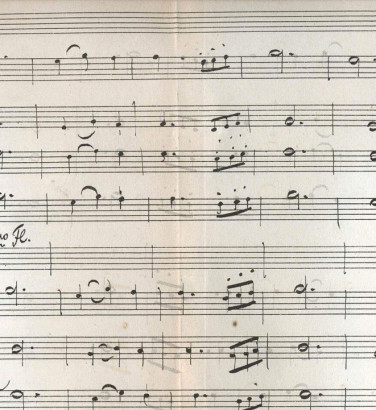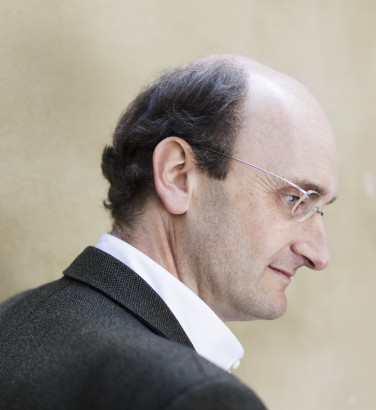
The (mis)numbering of symphonies
3 Nov 2023
News Story
From left to right: Schubert, Schumann, Bruckner and Mendelssohn
Researchers trying to identify which of an 18th century composer's symphonies was performed at a given concert in their own lifetimes can face quite a challenge. Any surviving posters will often refer to 'a grand symphony’ (which doesn't help much), and while ‘new’ or the work’s key can rule out some possibilities, even these indications have their limitations.
Things started to change by the early 19th century, thanks to Beethoven's expansion of the symphony into the genre of choice for making a grand statement. The extremely high regard in which his were held by later composers, along with their relatively small number (at least compared to his forebears), resulted in their being the first truly to be identified by the numbers assigned to them. That said, writing symphonies which reach into double figures has been a rare occurrence ever since: Shostakovich is probably the best-known exception to the rule (with 15 to his name), but even he is dwarfed by the contemporary composer Leif Segerstam, who (at the time of writing) has completed a staggering 352.
Beethoven's were written sufficiently far apart for their numbering to be an easy matter: the historical record is detailed enough to tell us the order in which they were written. It would be quite another matter for the next generation of composers, as publishers entering the equation rather muddied the waters.
Mendelssohn’s case is among the best known. Officially, he wrote five symphonies: No 1 in C minor, No 2 in B flat (Lobgesang or Song of Praise), No 3 in A minor (Scottish), No 4 in A (Italian) and No 5 in D minor (Reformation), numbered not according to when he wrote them (which you would have thought would make sense) but in order of publication.
Consider that the Italian and Reformation symphonies were published posthumously (and the wrong way round) and you get an idea of the problem. In chronological order, Nos 1 and 5 came first, followed by Nos 4 and 2, and finally No 3. There might once have been an argument for reassigning all five symphonies’ numbers, but they are so firmly established that to do so now would cause more trouble than it's worth. Just imagine the confusion if the SCO's recording of the Scottish and Reformation symphonies (with Principal Conductor Maxim Emelyanychev, released on 3 November 2023) referred to them as Nos 5 and 2 respectively!

How Mendelssohn's symphonies would look if renumbered in order of composition
Technically speaking, all five are actually misnumbered: Mendelssohn had completed a dozen symphonies for string orchestra in his early teens, all of which were disregarded when the official Symphony No 1 was published. Written for full orchestra, and on a much grander scale than the preceding twelve, it was perhaps more deserving of this prestige – as well as being a good advertising ploy by the young composer’s publisher.
An additional consideration comes into play with the numbering of Schumann's four symphonies. Chronologically, No 4 was the second to be written, but it remained unpublished until 1851 (a full decade later), by which time what we know as Nos 2 and 3 had appeared in print. The score which saw the light of day was a revised version of the original, generally held as an improvement in terms of structure despite its orchestration being perhaps weaker, but the grounds for referring to it as Schumann's Symphony No 2 are a little shaky. With both the 1841 version and the revision having their individual merits, there would be no particular benefit to changing the status quo.
Either way, it leaves the admirers of his Overture, Scherzo and Finale feeling decidedly overlooked. Had Schumann had his way, it's this piece which would have appeared as his second symphony (despite lacking a slow movement), but his publisher thought otherwise. The ungainly title with which the work has been lumbered ever since may account for its frequent omission from complete recordings of Schumann's symphonies, so it remains an under-appreciated gem.
Oh, what a tangled web we weave
When first we assign numbers to symphonies
In the case of more prolific symphonists, publishers quickly cottoned on to the attraction of nine as a magic number. Equalling Beethoven's achievement (if only numerically) meant a composer could be placed on a par with the great man: dubious tactics perhaps, but nonetheless sound marketing. (We'll leave the equally questionable Curse of the Ninth, according to which composers don't go on to write a Symphony No 10, for another time.) Had Bruckner's first forays in the genre been published sooner, for instance, we would know him as the composer of eleven symphonies, with No 7 in E major taking on the significant mantle of the ninth. The two earlier works eventually saw the light of day as No 0 in D minor and No 00 (yes, really) in F minor.
As far as Bruckner's official set of nine goes, they serve as ample evidence of why symphonies should be numbered in order of composition. He was notorious for revising his scores, for example reworking Nos 2, 3 and 4 at least four times each between 1873 and 1892, by which time he had written another four (Nos 5-8) and started on No 9. With so many variants available, this leaves the symphonies' numbers as just about the only constant we have to go by. Referring to them as Symphony No n (year version), as is standard practice, recognises the numbering of the works as originally conceived, no matter how much they may have changed afterwards.
Schubert's case appears to be more straightforward, even if his symphonies were assigned numbers posthumously – except that his admittance to the hallowed Nine Symphonies Club also requires a degree of shoehorning. For a start, not one but two unfinished symphonies have to be taken into account, No 7 in E having an equal claim to the title by which No 8 in B minor is known. The German-speaking world, however (where Schubert's symphonies were first published), does not assign any number to the former, so their Unfinished is No 7 in B minor and the Great becomes No 8 in C – unless you're going by the 1897 editions, where the numbers were swapped around in the belief that the Great predated the Unfinished. For something that affects only three symphonies, the inconsistencies in their numbering are quite frankly headache-inducing.
Perhaps there’s something to be said for knowing symphonies by their keys after all?

Maxim Emelyanychev conducts Mendelssohn
The latest SCO recording features Mendelssohn's most mature symphony, the Scottish, alongside the lesser-known Reformation.
Related Stories
![]()
Unfinished symphonies
15 December 2025
Your starter for ten: besides Schubert, who has an unfinished symphony to their name?![]()
Andrew Manze: "I've always loved Viennese waltzes and polkas"
1 December 2025
Our Principal Guest Conductor is really looking forward to conducting our Viennese New Year concerts!![]()
The medieval carol
24 November 2025
For this year's Christmas article, we look back at some very early festive carols ...


